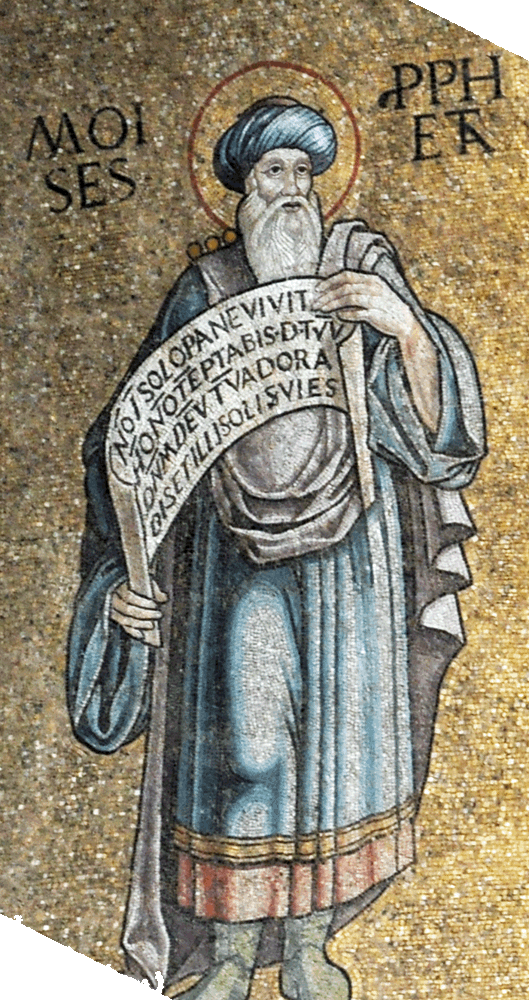
Moses
12th or 13th century
Mosaic
St. Mark's Basilica, Venice
This portrait is near the scene of Jesus' temptation in the desert (Matthew 4:1-11, Luke 4:1-13). Moses was believed to be the author of the Book of Deuteronomy, which is the source of the three verses that Jesus quotes against Satan's temptations (Catholic Encyclopedia, s.v. "Pentateuch").
In this picture, the scroll that Moses holds contains those three verses. The first is from Deuteronomy 8:3, Non in solo pane vivit homo, "Not by bread alone does man live." Jesus quotes this in Matthew 4:4, compare Luke 4:4, when Satan suggests he change stones into bread. The second is from Deuteronomy 6:16, non temptabis deum tuum, "thou shalt not tempt the Lord thy God." Jesus quotes it at Matthew 4:7, compare Luke 4:12.
The third quotation is actually a paraphrase of Deuteronomy 6:13, Dominum Deum tuum timebis et ipsi servies ac per nomen illius iurabis, "Thou shalt fear thy God and serve him and swear by his name." In Matthew 4:10, compare Luke 4:8, this is paraphrased to what we see on the scroll: dominum deum tuum adorabis et illi soli servies. This is the answer to Satan's offer of worldly power if Jesus will worship him: "Thou shalt adore the Lord thy God and serve him alone."
The words left and right of Moses' head are moises and propheta.
The turban Moses wears is a common feature in Italian images of historical figures in the Middle East.
View this image in full resolution.
Read more about images of Moses
Photographed at the basilica by Richard Stracke, shared under Attribution-NonCommercial-ShareAlike license.